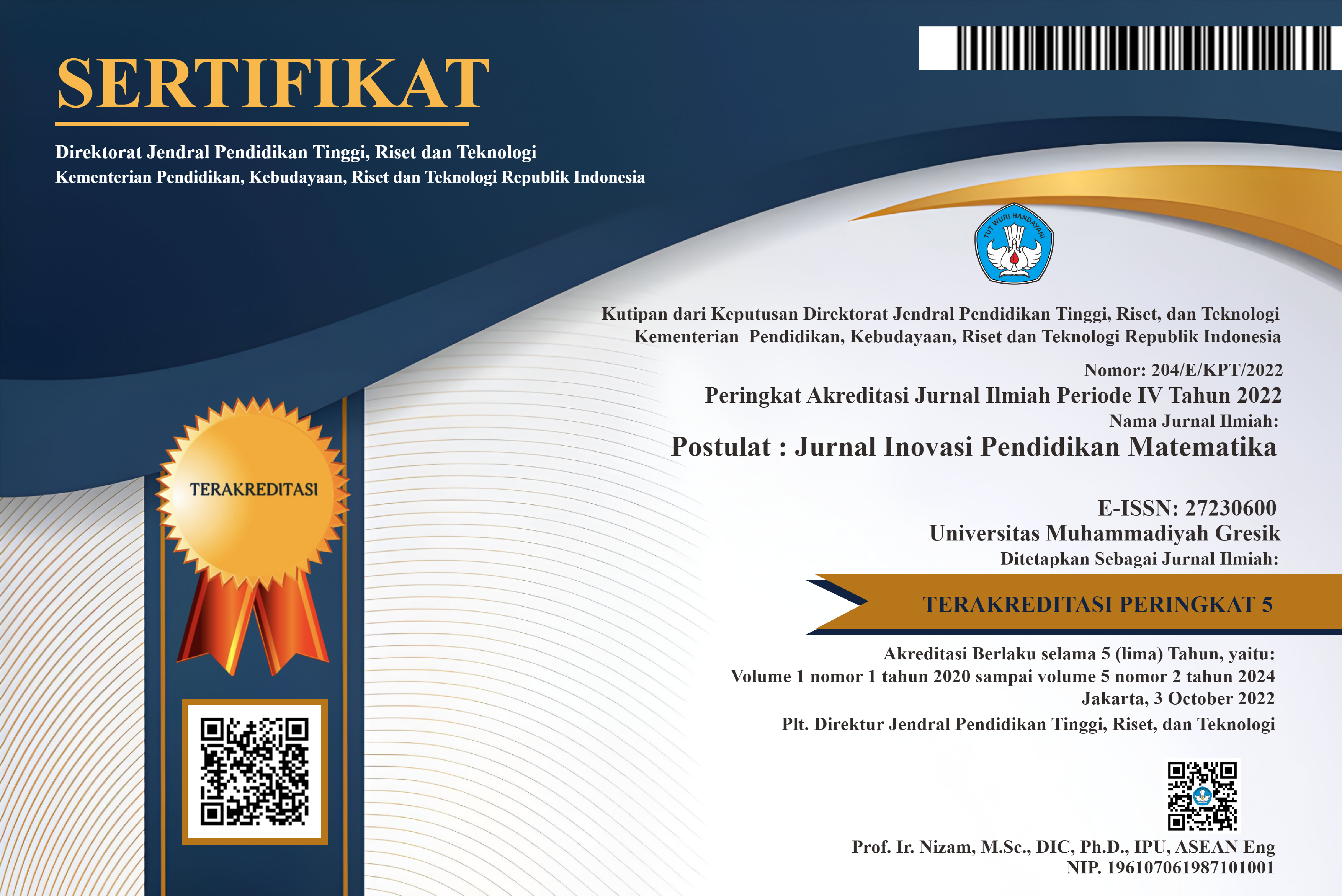Analisis Kemampuan Siswa SDN Banjardowo 1 Jombang dalam Memecahkan Masalah Pecahan
DOI:
https://doi.org/10.30587/postulat.v4i2.6611Keywords:
Pemecahan Masalah, Pecahan, MatematikaAbstract
The aim of this research is to describe the fraction problem solving abilities of students with high mathematical abilities at SDN Banjardowo 1 Jombang. This research is a qualitative research. The subjects of this research were class V students at SDN Banjardowo Jombang with one subject with high mathematical abilities. Data collection methods are tests and interviews. The research instruments are the researcher himself as the main instrument and test instruments and interviews as supporting instruments. Checking the validity of the data uses time triangulation. The results of this research are that students at SDN Banjardowo 1 Jombang solve fraction problems according to Polya's steps, namely restating the problem in language they understand while looking at the problem, can state what is known about the problem, can state what is asked about the problem, explain the solution strategy problems that he has written down, can write down the stages of problem solving strategies, re-examine the stages of problem solving, re-examine the results of problem solving, and can draw conclusions from the results of problem solving.
References
Maf’ulah, S., & Juniati, D. (2019). Students’ Strategies to Solve Reversible Problems of Function: The Part of Reversible Thinking. Journal of Physics: Conference Series, 1417(1).
Maf’ulah, Syarifatul, & Juniati, D. (2020). The effect of learning with reversible problem-solving approach on prospective-math-teacher students’ reversible thinking. International Journal of Instruction, 13(2), 329–342
Maulyda, M.A. (2020). Paradigma Pembelajaran Matematika Berbasis NCTM. Malang, Indonesia: CV. Irdh.
Nafi’an, M.I. (2021). Penyelesaian Soal Cerita Siswa Sekolah Dasar Berdasarkan Gender. Jurnal Absis, 3(2), 328-336.
NCTM. (2000). Principles and standards for school mathematics. Reston, VA: NCTM.
Putri, L.I.S. (2015). Analisis Kemampuan Pemecahan Masalah Matematika Bentuk Soal Cerita Materi Operasi Hitung Bilangan Pecahan Siswa MI-Islamiyah Bangsri Plandaan Jombang Tahun Pelajaran 2014-2015. Skripsi tidak diterbitkan. Jombang, Indonesia: STKIP PGRI Jombang.
Rasyid, M.A., et. al. (2017). Profil Berpikir Reflektif Siswa SMP dalam Pemecahan Masalah Pecahan Ditinjau dari Perbedaan Gender. Kreano: Jurnal Matematika Kreatif – Inovatif, 8(2), 171-181.
Roebyanto, G., & Harmini, S. (2017). Pemecahan Masalah Matematika (N.N. Muliawati, Ed.). Bandung, Indonesia: PT. Remaja Rosdakarya.
Setiyadi, D. (2020). Analisis Kemampuan Pemecahan Masalah Ditinjau dari Gaya Belajar Siswa Sekolah Dasar. JISPE (Journal of Islamic Primary Education), 1 (1), 1-10.
Sugiyono. (2022). Metode Penelitian Kualitatif. Bandung, Indonesia: Alfabeta.
Sulistiono, A. (2015). Analisis Kemampuan Pemecahan Masalah Pecahan Siswa Kelas V SDN Balongsari 2 Mojokerto Berdasarkan Kemampuan Matematika. Skripsi tidak diterbitkan. Jombang, Indonesia: STKIP PGRI Jombang.
Wati, R.W., & Sary, R.M. (2019). Analisis Kemampuan Menyelesaikan Masalah Soal Cerita pada Materi Pecahan di Sekolah Dasar. Seminar Pendidikan Nasional (SENDIKA), 378-386, diselenggarakan oleh Universitas PGRI Semarang.












